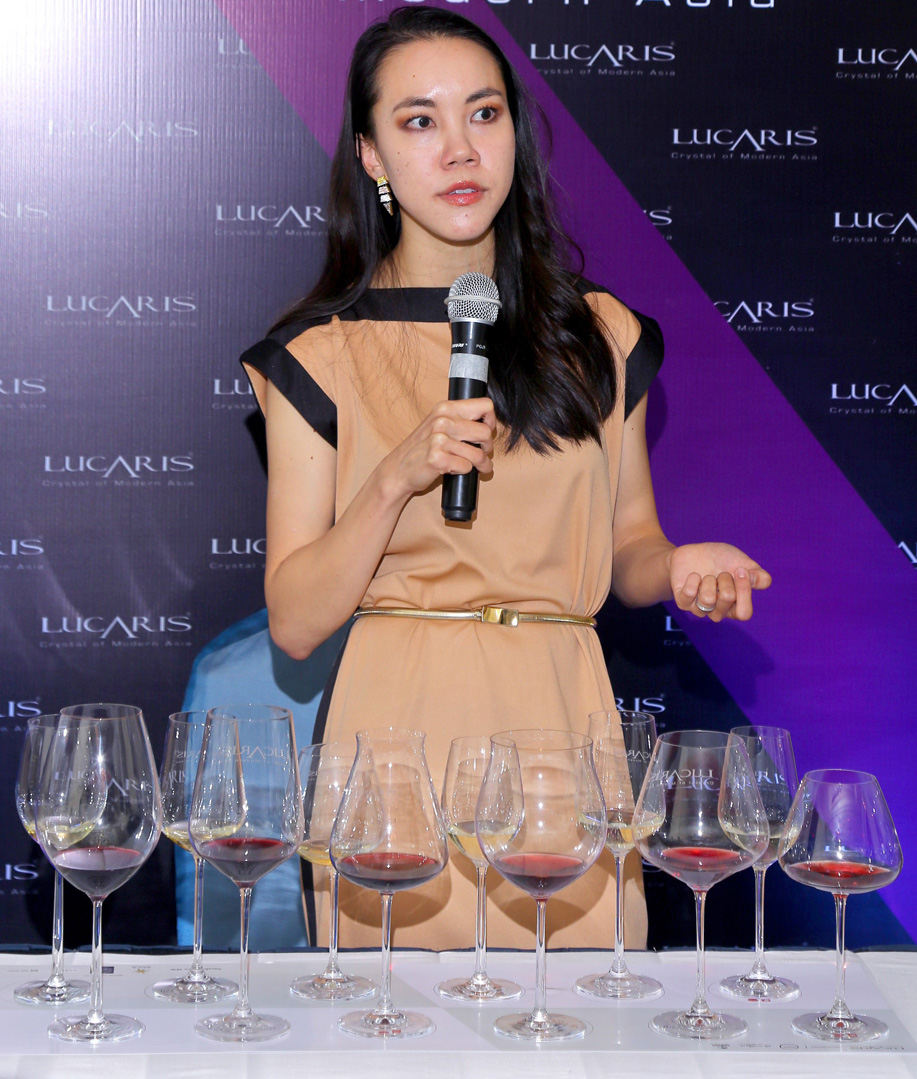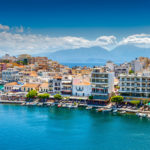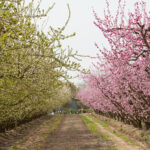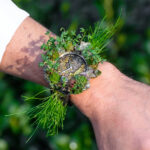At 29, Sarah Heller is the youngest Master of Wine in the world. In India for a special wine tasting program by one of the world’s biggest luxury crystal glassware brand Lucaris – The Crystal of Modern Asia. Lucaris is a luxury crystalware brand from Ocean Glass Public Company Limited, Thailand but a favorite of many across Asia. In an interesting conversation with PEAKLIFE, Sarah Heller tells us all about her love for wine, the global trends and the use of correct glassware to enjoy your wine.

- How did your love for wine begin?
I originally wanted to be a chef, but every time I was working in a kitchen (starting in 2008) I found myself being taken to a wine fair or sneaking out of the kitchen to taste wine with suppliers. My first boss was a great lover of Piemontese wines so I was lucky enough to fall in love with wine in the heart of one of the world’s greatest wine cultures.
- What has your journey with wine been like…
Because a big chunk of my career was spent running wine events, education, market research and media company, and now I do a lot of design and content creation, I joke that for years I’ve been involved in every aspect of wine except making and selling it. I’ve been lucky enough to travel to countless wine regions, meet industry icons and taste wines a tiny fraction of wine lovers will ever be able to try, but that’s the glamorous side. The other is weeks of travel away from my family with virtually no rest or sleep, shaking myself awake after another evening of too much wine and (sadly common) nights spent working on spreadsheets until 3 am. The common theme has been rapid learning – new industries (like television), new ideas, new cultures: like being here in India now!
- Just 29, and you hold the title of the youngest ‘Master of Wine.’ What does the title entail?
It’s not an academic qualification per se, but the exams to achieve the title are incredibly rigorous. First, we must pass a Theory exam of 5 papers on vine growing, winemaking, packaging and quality control, wine business and global issues and a blind tasting exam of 3 papers with 12 wines each. We try to identify the wine’s region, grape variety, winemaking technique, quality and commercial position (including price) and sometimes vintage. The pass rate for each exam is close to 15% every year. If we pass, we write a research paper on a topic of our choice. Mine was on the e-commerce market for wine in China.
- How important is the role of glassware and what are the different innovations in glass-making to enhance the wine drinking experience?
Wine glasses are a key tool to ensure you’re getting the best experience a wine has to offer. The most important innovations relate to the material and glassblowing technology. Lucaris uses lead-free crystal glass, which is incredibly clear and can be blown super thin so that, critically, the rim can be super fine. Because it doesn’t have the thicker rolled edge you get with normal glass, the wine flows smoothly into your mouth giving a noticeably “finer” impression. It’s a subtle difference but once you point it out to even non-wine experts it becomes quite obvious.

- Can we get a quick lesson from you on the kinds of glasses that go well or best fit the different kinds of wine?
Virtually all wines, including sparkling, benefit from being in a tulip shaped bowl because it provides a wide surface for their aromas to evaporate and then collects them at the nose. Red wine glasses are larger than white, partly because of the convention but also because most whites taste better at cooler temperatures and the smaller size helps the wine stay cool. Red wines that we appreciate for their aroma (often light in color) should generally be in glasses with even wider and more tapered bowls to release then collect those aromas. Wines that have really firm tannins (usually dark in color) are often better in a less tapered, wider rimmed bowl, which helps the wine feel smoother in your mouth.
- Your views on the wines from the non-traditional wine growing regions, like Australia and India?
At this point, Australia has been producing wine long enough (over a hundred years) that it has taken on some of the traits of European wine countries like clear regional styles, but it retains the experimental spirit that makes the so-called “New World” such an exciting field for wine consumers. I especially love some of the eccentric combinations I’ve seen like Fiano and Riesling blended in clay amphorae. India is in an earlier phase, where it’s just starting to identify the best sites and varieties for those sites. What is encouraging is the lack of “over-winemaking” – the wines made from overripe grapes with too much oak that are an unfortunate feature of so many new wine regions. The best Indian examples have subtlety and nuance.
- India is a whiskey drinking country, with over 80% of the alcohol consumption being whiskey and scotch. But wine is seeing a surge in its numbers too. Your views on the Indian market for wine, and its future.
Whiskey is definitely well ahead of wine, but wine has been growing considerably for at least 10-15 years. Its acceptance among both young and female consumers is especially encouraging. Now that the demand is clearly there, we need government support and infrastructure to simplify distribution so wine can get to consumers in good condition at manageable prices. It’s no small hurdle, but from there I suspect growth could be explosive.
- As a writer and communicator and an authority on wine, and been a part of the wine e-commerce business (which is fairly missing in India), how do you encourage consumers to become more educated about wines?
Any good wine education, including a personal education, has to involve tasting but doing so in a thoughtful, conscious manner. You could drink all the greatest wines in the world and not learn a thing, or stick to value wine and learn a decent amount. I suggest finding a website like Wine Folly that systematically covers the world’s wine regions and commits to reading one section and trying one of the wines mentioned each week. You would learn an astonishing amount.
- Like China, even in India, the common perception of wine is that it’s a luxury possession, while in the European countries, wine is a part of everyday living, and one would open a regular bottle irrespective a celebratory occasion. What are your views on the future of the Asian market, with respect to this perception of wine?
Part of why wine is such a luxury in both China and India is that high taxation means it simply isn’t affordable to drink regularly for most people, while in European countries like Spain or Italy there is no excise duty on wine. China has been signing free trade agreements to eliminate import duty on wine, but India has yet to follow suit. Personally, I’m not convinced wine should be treated as an everyday consumable – per capita wine consumption of 50+ liters like in France isn’t necessarily the goal, but rather that wine should become an “affordable luxury.” Fortunately, rising quality of domestic production in both countries is going a long way to increase people’s sense that wine is something to be enjoyed more than just for celebratory occasions.











